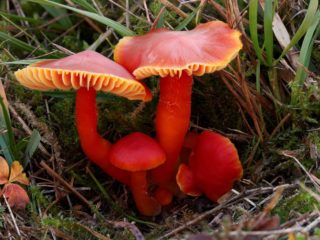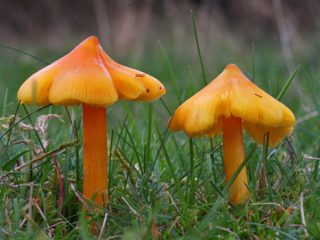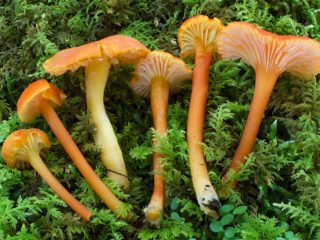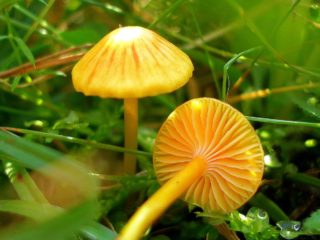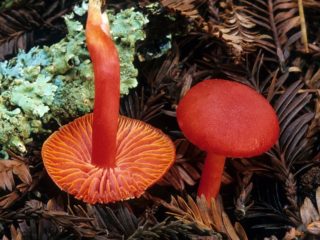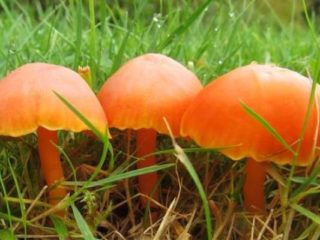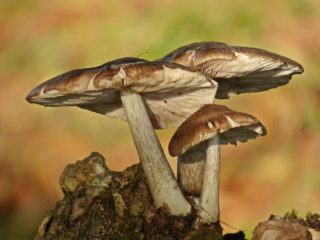Content
The beautiful hygrocybe is an edible representative of the Gigroforaceae family, of the order Lamellar. The Latin name of the species is Gliophorus laetus. You can also meet other names: Agaricus laetus, Hygrocybe laeta, Hygrophorus houghtonii.
What does a hygrocybe look like? Beautiful
In order not to collect inedible specimens in the basket, you need to familiarize yourself with the structural features of the Beautiful hygrocybe.
The mushroom is not large in size. The diameter of the cap ranges from 1 to 3.5 cm. At first, the cap is convex; as it grows, it opens, becoming flattened or depressed. The color of the cap varies from lilac gray to wine gray with an olive tint. Older specimens develop reddish-orange or reddish tints. The surface is smooth, slimy.
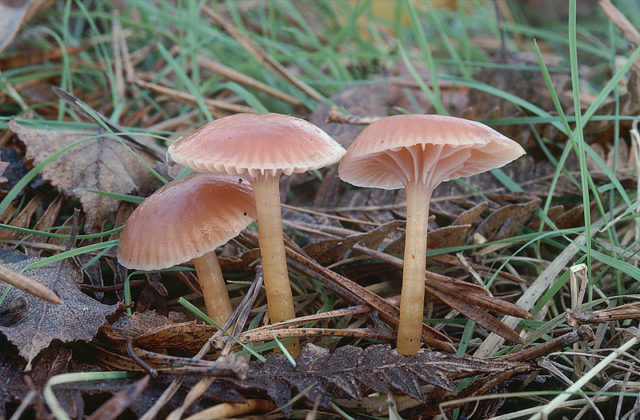
There is no ring on the leg of the beautiful hygrocybe
The color of the pulp is slightly lighter than the color of the cap. Weak mushroom smell. The taste is also unexpressed.
The length of the leg is from 3 to 12 cm, the thickness is 0.2-0.6 cm. The color is identical to the color of the cap, usually a grayish-lilac shade prevails. The leg is hollow inside, the surface is smooth, slimy.
Plates are formed under the cap. They grow to the leg or descend on it. The edges of the lamellar layer are even, the color is identical to the color of the cap, the edges may differ in pinkish-lilac tones.
Spores are ovoid or elliptical.
Where does the hygrocybe grow Beautiful
This type of mushroom is found in Europe, Japan and America. Prefers humus soil, grows in coniferous and mixed forests, loves moss or grass bedding. Most often it grows in groups, found in thickets of bushes.
The fruiting period is in the summer months. The first copies are found in July, the last ones in September.
Is it possible to eat a hygrocybe Beautiful
This type of small mushroom is often mistaken for poisonous, so it is very rarely harvested.
False doubles
Hygrocybe Beautiful can be confused with other representatives of the species:
yellow-green is slightly larger. The diameter of the cap is from 2 to 7 cm. The bright lemon-green or orange-yellow color of the mushroom is the main difference from the beautiful hygrocybe, which has olive-lilac shades. There is a yellow-green representative infrequently, common in Eurasia and North America. It has a low taste, so it is rarely used for food. The season of appearance is from May to October. Grows singly or in small groups. You can find them in forests, in meadows;
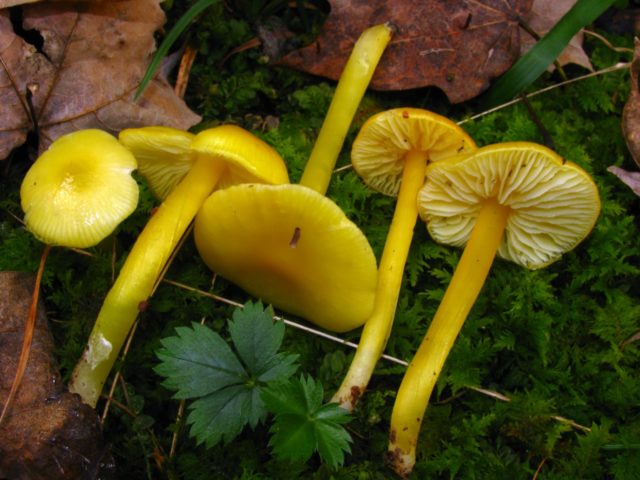
A distinctive characteristic of a yellow-green hygrocybe is a bright lemon color
the pseudo-conical is also large in size. The diameter of the cap ranges from 3.5-9 cm. The color is reddish-orange, yellowish. The color of the leg is slightly lighter, maybe lemon yellow. Blackness appears at the site of damage. The mushroom does not differ in its pronounced taste and aroma. Refers to poisonous specimens.Its use in food is fraught with mild indigestion;
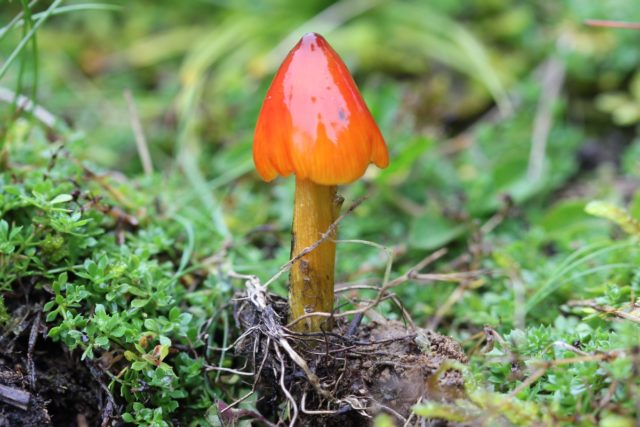
False conical hygrocybe - a poisonous member of the family
False conical hygrocybe - a poisonous member of the family
meadow has a flat-conical cap measuring from 2 to 10 cm, orange. The surface is slippery in high humidity. The leg is fragile, fibrous. The plates are slightly lighter than the entire surface. The color of the spore powder is white. Occurs in meadow glades, on forest edges, bears fruit from September to November. Refers to conditionally edible specimens;
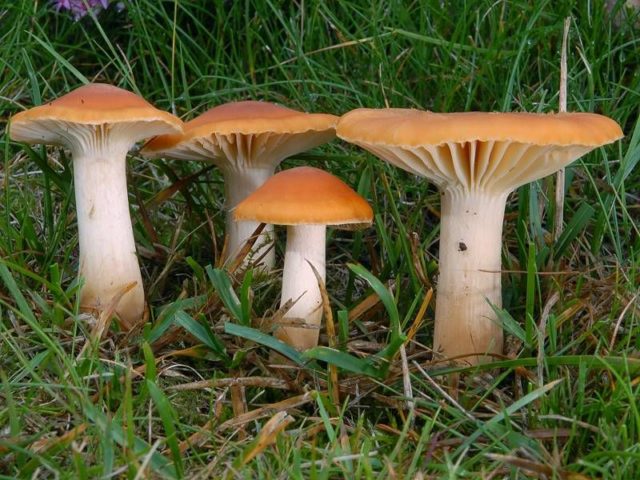
Conditionally edible mushroom - meadow hygrocybe
the crimson variety has a reddish-crimson hue, sometimes turning into orange. Representatives of this species are found everywhere in wet areas.
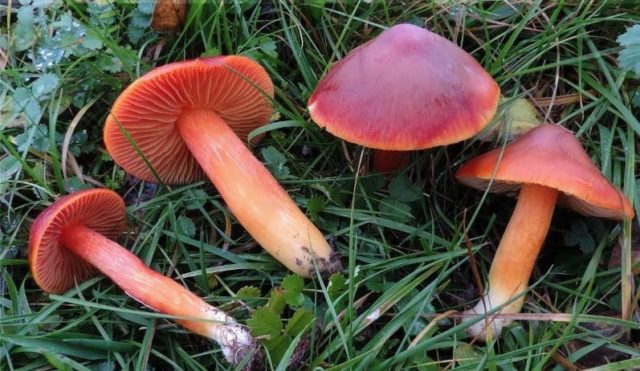
Mushrooms are characterized by good taste, so they can be fried and preserved
Use
It is recommended to boil for at least 20 minutes, then drain the water, and add the mushrooms to the soup, fry or stew with vegetables. It can be an excellent substitute for the usual mushrooms in cooking.
Conclusion
Hygrocybe Beautiful is a mushroom that can be used to prepare various dishes. Due to its small size, it is rarely harvested, mistaking for poisonous specimens.

